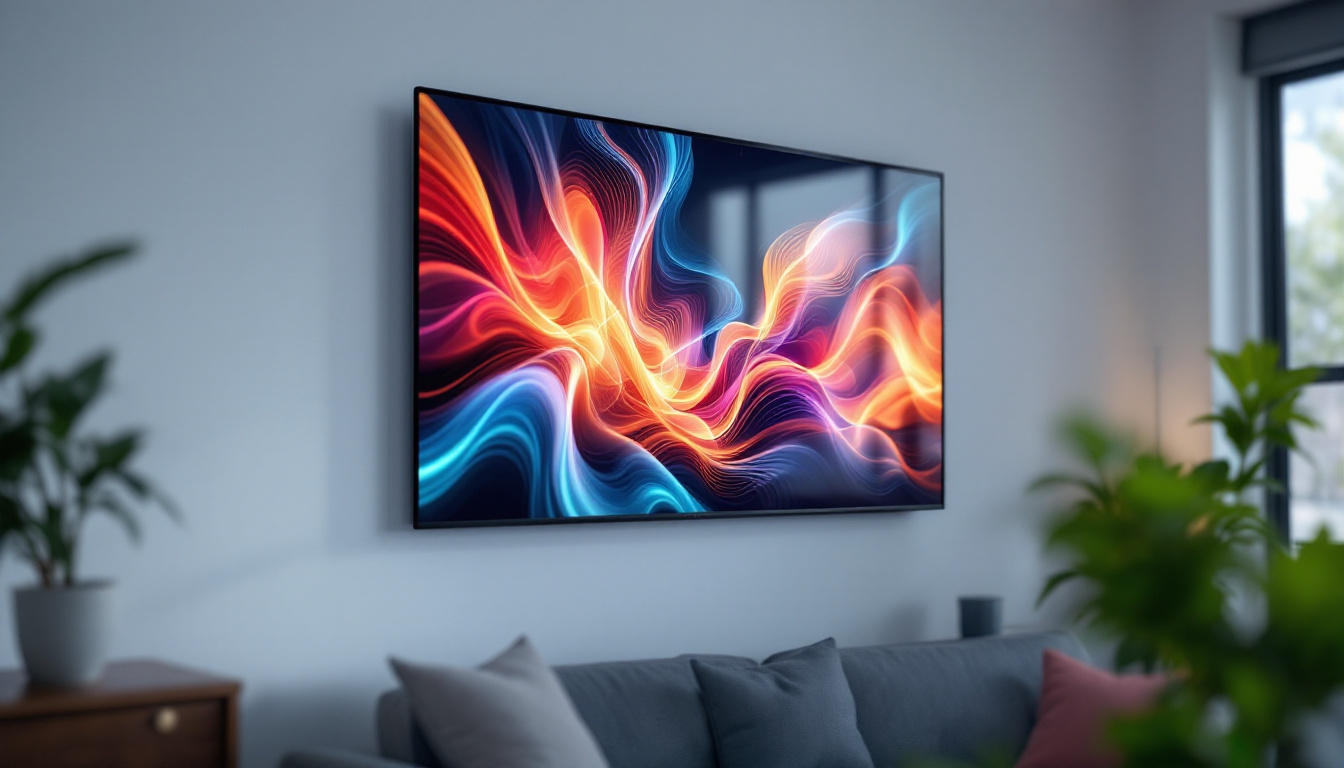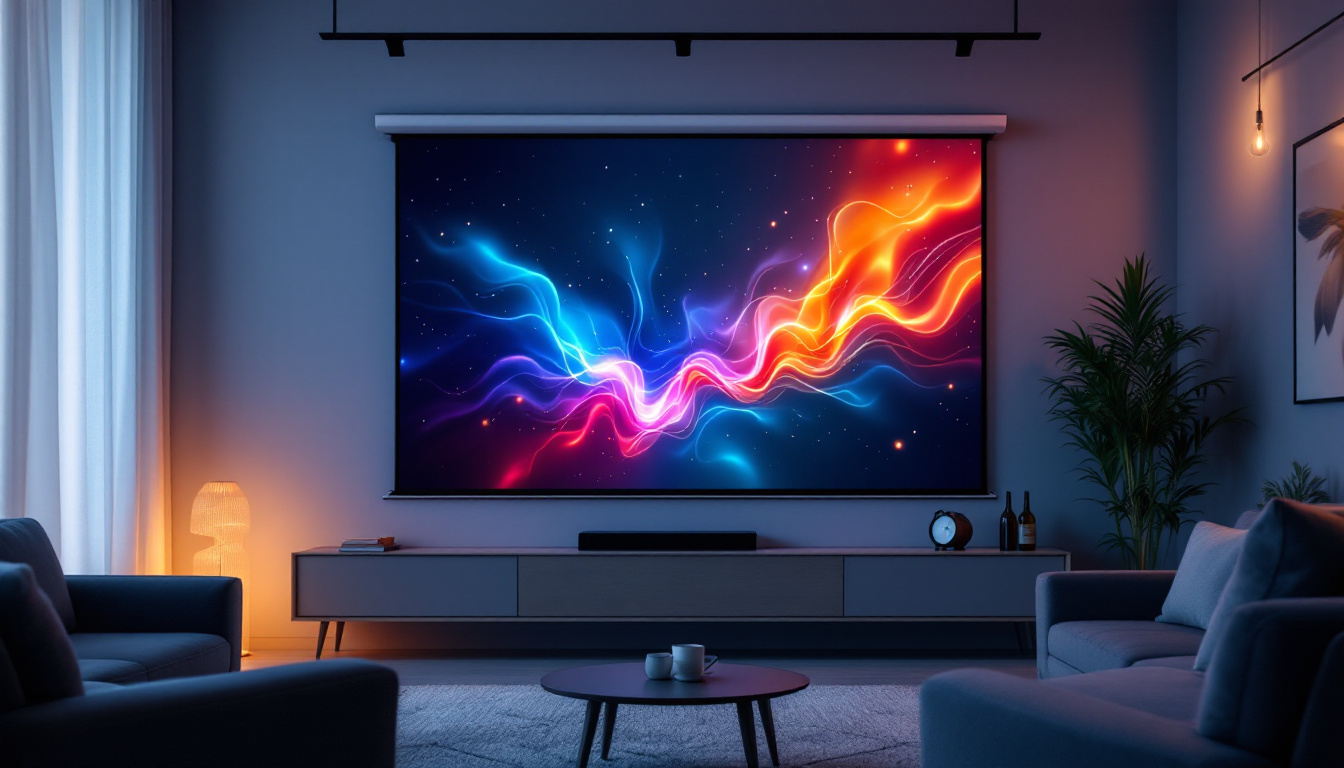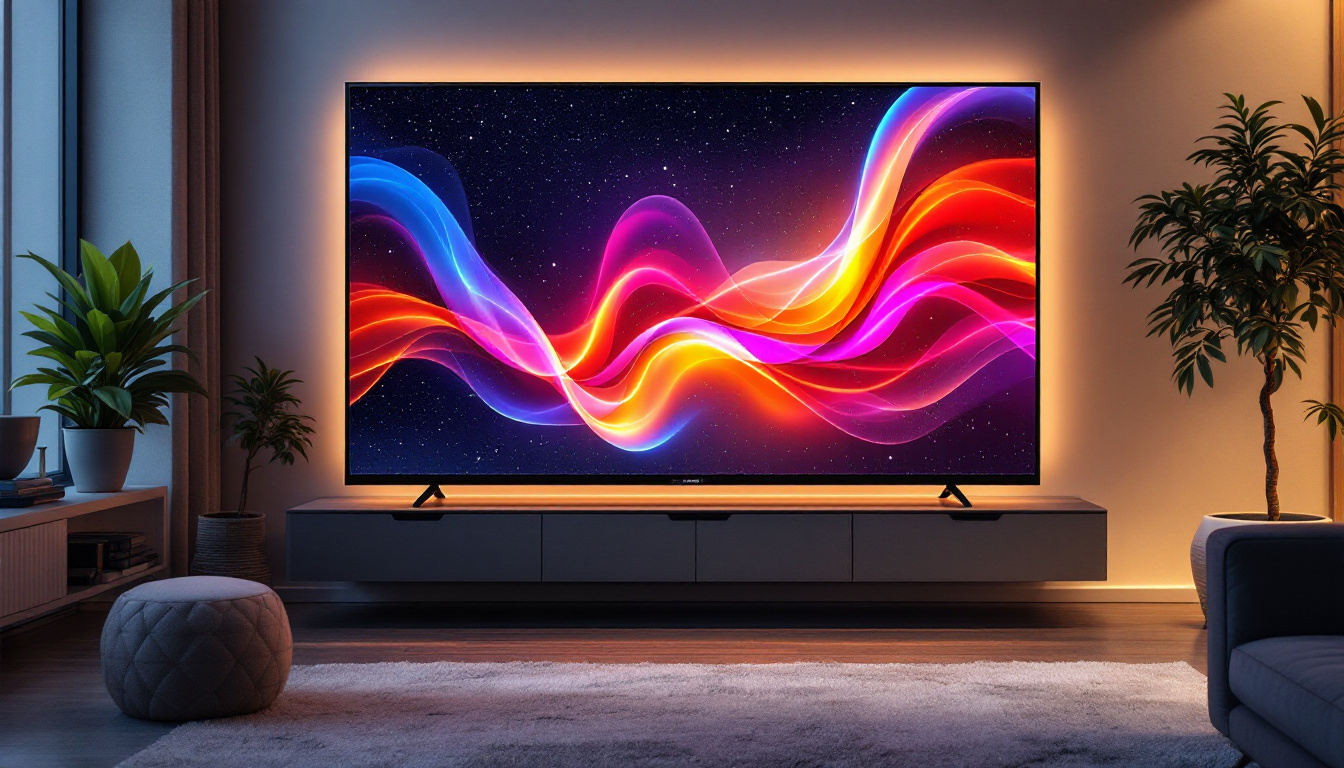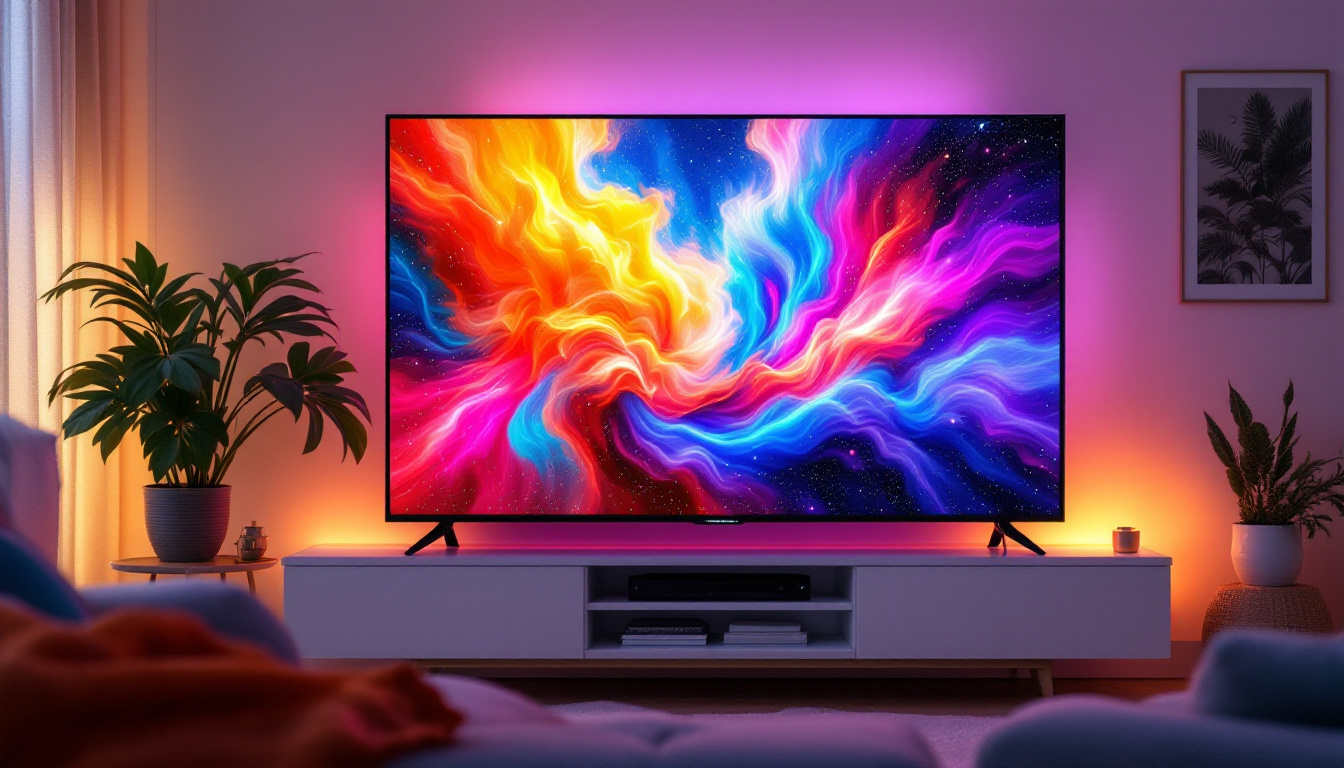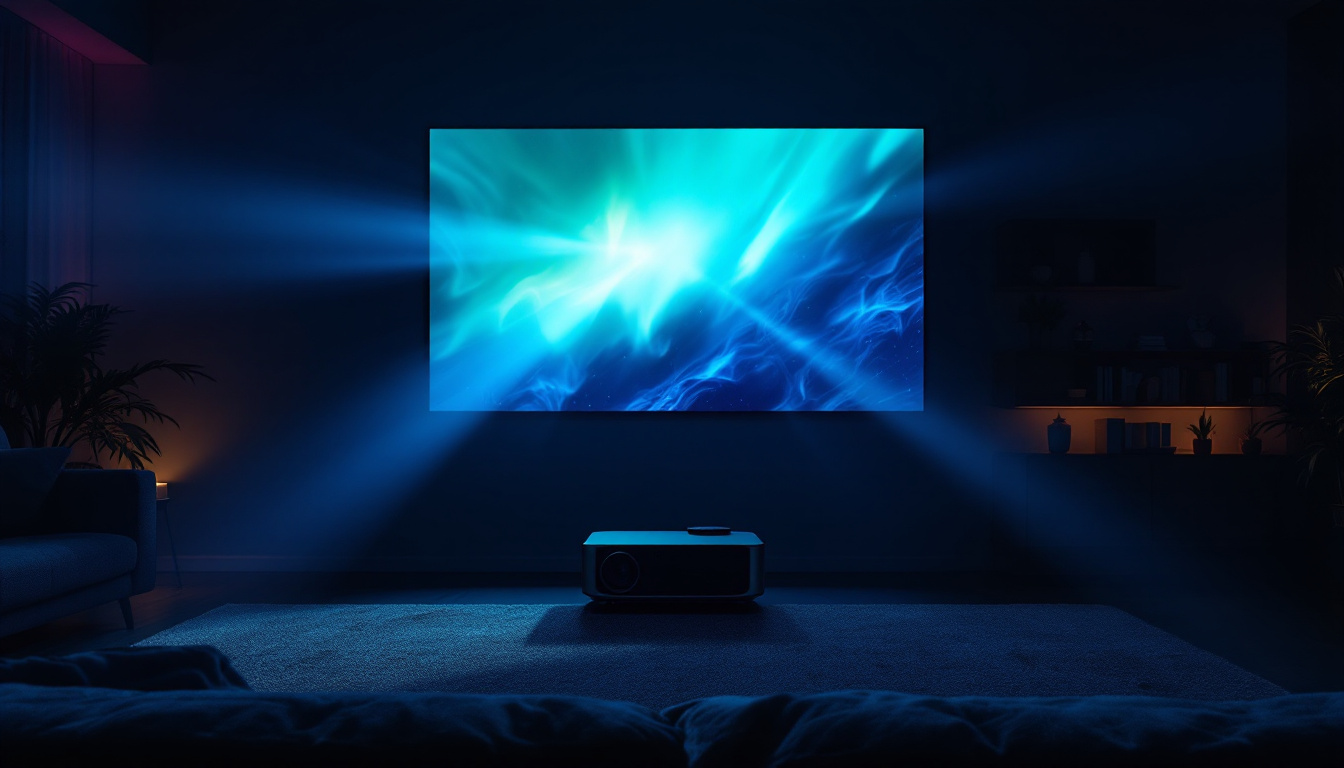In an era where visual technology is rapidly evolving, the 4K touch display has emerged as a significant player in various industries. These displays combine high-resolution visuals with touch interactivity, creating immersive experiences for users. This article delves into the intricacies of 4K touch displays, particularly focusing on LED technology, its applications, and the advantages it offers.
Understanding 4K Resolution
4K resolution, often referred to as Ultra High Definition (UHD), represents a significant leap in display technology. With a pixel count of 3840 x 2160, 4K displays offer four times the resolution of Full HD (1920 x 1080). This increase in pixel density results in sharper images, more vibrant colors, and finer details, making it an appealing choice for various applications. The clarity and depth of 4K visuals can transform the viewing experience, whether it’s for home entertainment or professional use, allowing audiences to immerse themselves in content like never before.
The Importance of Resolution
Resolution plays a critical role in the quality of visual displays. Higher resolution means that images can be displayed with greater clarity, which is particularly important in fields such as graphic design, medical imaging, and gaming. For instance, in graphic design, the ability to see intricate details can significantly enhance the creative process. In medical imaging, 4K resolution can aid in the precise analysis of scans, allowing healthcare professionals to detect abnormalities that might be missed in lower resolutions. Furthermore, in gaming, the immersive experience is heightened as players can appreciate the finer textures and details in the game environment, which can provide a competitive edge.
Benefits of 4K Displays
4K displays provide numerous benefits that extend beyond mere resolution. They offer improved color accuracy, which is crucial for professionals in photography and video production. The wider color gamut available in 4K technology ensures that images are not only sharper but also more true-to-life, allowing creators to showcase their work with the fidelity it deserves. Additionally, the enhanced detail allows for larger screens without sacrificing image quality, making them ideal for presentations and public displays. This capability is particularly advantageous in settings such as museums or galleries, where high-resolution images can captivate and engage audiences, drawing them into the narrative being presented. Moreover, as streaming services increasingly adopt 4K content, viewers can enjoy a cinematic experience at home, further solidifying 4K’s status as the new standard in visual technology.
What is a Touch Display?
A touch display is an interface that allows users to interact with a device through touch. This technology has transformed how users engage with screens, enabling direct manipulation of on-screen content. Touch displays can be found in various devices, including smartphones, tablets, and large interactive screens. The evolution of touch display technology has led to increasingly sophisticated interfaces, making user experiences more intuitive and accessible than ever before.
Types of Touch Technology
There are several types of touch technology, including resistive, capacitive, and optical. Each type has its unique characteristics and applications. Resistive touch screens, for example, respond to pressure and can be used with gloves or styluses, making them suitable for industrial environments. Capacitive screens, on the other hand, rely on the electrical properties of the human body and are commonly found in smartphones due to their high sensitivity and clarity. Optical touch technology, which uses cameras to detect touch, is gaining traction in large-format displays, offering a seamless experience in environments like museums and public information points.
Applications of Touch Displays
Touch displays are widely used in various sectors, including education, healthcare, and retail. In educational settings, interactive touch screens facilitate engaging learning experiences, allowing students to interact with content dynamically. This interactivity can enhance retention and understanding, as students can manipulate visuals and participate in collaborative activities. In healthcare, touch displays enable medical professionals to access patient information quickly, enhancing efficiency and accuracy in care delivery. These displays can also support telemedicine applications, allowing doctors to consult with patients remotely while accessing vital health data in real-time. Retailers utilize touch displays for interactive kiosks, improving customer engagement and service. These kiosks can provide product information, facilitate transactions, and even offer personalized recommendations based on user preferences, creating a more tailored shopping experience.
LED Technology Explained
Light Emitting Diode (LED) technology is a key component of modern display systems. LED displays use semiconductor materials to emit light when an electric current passes through them. This technology offers several advantages, including energy efficiency, longevity, and superior brightness.
How LED Displays Work
LED displays consist of an array of tiny light-emitting diodes that create images by varying the intensity of light emitted. These displays can be either direct-lit or edge-lit. Direct-lit LED displays have LEDs placed behind the screen, providing uniform brightness across the entire display. Edge-lit displays, however, have LEDs positioned along the edges, which can lead to uneven brightness but allows for thinner designs.
Advantages of LED Technology
One of the primary advantages of LED technology is its energy efficiency. LED displays consume significantly less power compared to traditional LCD displays, making them more environmentally friendly. Furthermore, LED displays have a longer lifespan, often lasting tens of thousands of hours, which reduces the need for frequent replacements.
Combining 4K and Touch Technology
The integration of 4K resolution with touch technology results in a powerful combination that enhances user experience. This synergy allows for high-quality visuals coupled with intuitive interaction, making it ideal for various applications.
Interactive Presentations
In business settings, 4K touch displays are revolutionizing presentations. The ability to interact with content directly on the screen enables presenters to emphasize key points, zoom in on details, and engage the audience more effectively. This interactivity can lead to more productive meetings and discussions.
Enhanced Learning Experiences
In educational environments, 4K touch displays can transform traditional teaching methods. Educators can utilize rich multimedia content, including videos and interactive simulations, to create a more engaging learning atmosphere. Students can participate actively by touching the screen, fostering collaboration and creativity.
Applications of 4K Touch Displays
4K touch displays find applications across various sectors, each leveraging their unique capabilities to enhance user interaction and experience. From corporate environments to entertainment venues, these displays are making waves.
Corporate Use Cases
In the corporate world, 4K touch displays are often used for collaborative workspaces. They facilitate brainstorming sessions, allowing teams to share ideas visually and interactively. Digital whiteboards equipped with 4K touch technology enable participants to annotate presentations in real-time, making meetings more dynamic and engaging.
Healthcare Innovations
In healthcare, 4K touch displays are utilized for patient education and medical imaging. Surgeons can use these displays to view high-resolution images during procedures, enhancing precision and outcomes. Additionally, patient education materials can be presented on touch screens, allowing patients to engage with their health information interactively.
Retail and Customer Engagement
Retailers are increasingly adopting 4K touch displays for interactive kiosks and digital signage. These displays can showcase products in stunning detail, allowing customers to explore features and specifications. Interactive elements, such as touch-based product comparisons, enhance the shopping experience and can lead to increased sales.
Challenges and Considerations
While 4K touch displays offer numerous advantages, there are also challenges and considerations to keep in mind. Understanding these factors can help organizations make informed decisions when integrating this technology.
Cost Implications
The initial investment for 4K touch displays can be significant, particularly for large installations. Organizations must weigh the benefits against the costs and consider the long-term return on investment. However, as technology advances, prices are gradually decreasing, making 4K touch displays more accessible.
Maintenance and Support
Maintaining 4K touch displays requires regular upkeep to ensure optimal performance. This includes cleaning the screens, updating software, and addressing any technical issues that may arise. Organizations should consider the resources needed for ongoing support and maintenance when implementing these systems.
The Future of 4K Touch Displays
The future of 4K touch displays looks promising, with advancements in technology paving the way for even more innovative applications. As industries continue to embrace digital transformation, the demand for high-quality, interactive displays is expected to grow.
Emerging Trends
Emerging trends in display technology, such as OLED and MicroLED, may further enhance the capabilities of touch displays. These technologies offer improved color accuracy, contrast ratios, and flexibility, potentially leading to even more immersive experiences. As these technologies evolve, they may integrate seamlessly with 4K touch displays, expanding their applications.
Integration with AI and IoT
Furthermore, the integration of artificial intelligence (AI) and the Internet of Things (IoT) with 4K touch displays can create smart environments. For instance, in smart homes, touch displays can serve as control panels for various devices, allowing users to manage their environments intuitively. In retail, AI-driven analytics can personalize customer interactions, enhancing the shopping experience.
Conclusion
In conclusion, 4K touch displays represent a significant advancement in display technology, combining high-resolution visuals with interactive capabilities. Their applications span various industries, enhancing user engagement and experience. While challenges exist, the benefits of integrating 4K touch displays into business operations, educational environments, and retail spaces are substantial. As technology continues to evolve, the future of 4K touch displays promises to be even more dynamic and impactful.
Organizations looking to adopt this technology should carefully consider their specific needs, potential applications, and the long-term benefits of investing in 4K touch displays. With the right approach, these displays can transform the way users interact with technology, leading to improved outcomes across various sectors.
Discover LumenMatrix’s Innovative 4K LED Display Solutions
Ready to elevate your visual experience with the latest in 4K touch display technology? LumenMatrix, a pioneer in LED display innovation, offers a comprehensive range of solutions tailored to meet your needs. From captivating Indoor and Outdoor LED Wall Displays to dynamic Vehicle and Sports LED Displays, our products are designed to enhance engagement and bring your content to life. Explore our versatile LED Poster Displays, interactive Floor LED Displays, and the sleek All-in-One LED Display options. For a truly unique visual statement, discover our Custom LED and Transparent LED Displays. Embrace the future of visual communication with LumenMatrix and create unforgettable visual experiences. Check out LumenMatrix LED Display Solutions today and transform your space with unparalleled clarity and impact.


